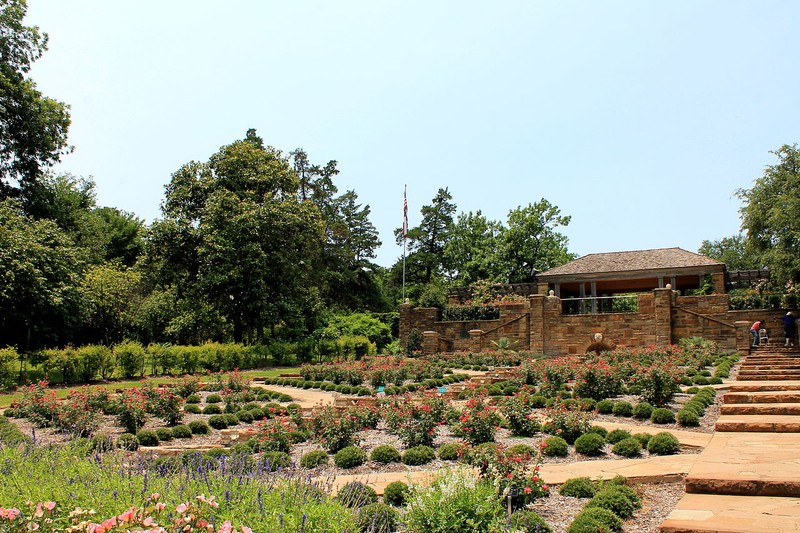Fort Worth Botanic Garden
Introduction
Text-to-speech Audio
The Fort Worth Botanic Garden was established in 1933, making it the oldest botanic garden in the state. It is historically significant for its landscape design and terraced municipal rose garden, which was modeled after Italian and French formal gardens of the 16th-18th centuries. It features a water cascade, geometric flower beds, a reflection pool, and a pond. The garden has grown to over 20 specialty garden spaces and also features a rain forest conservatory, a perennial trial garden, and a boardwalk. Another highlight is the Japanese garden, which was added in 1973 and includes a koi (fish) pond, waterfall, teahouse complex, pagoda, and bridges.
Images
The rose garden is the centerpiece of the Fort Worth Botanic Garden.

Backstory and Context
Text-to-speech Audio
The Fort Worth Municipal Rose Garden officially opened on October 15, 1933. At the time it was part of Rock Springs Park, which was established in 1912 and gradually developed with trails, ponds, waterfalls, and lagoons. Landscape architecture firm Hare & Hare designed the rose garden and developed a comprehensive plan for the rest of the park. In 1934, the park's name was changed to the Fort Worth Botanic Garden. The Japanese garden was designed by Kingsley Wu and is located on a gravel pit once used as a trash midden by the army during WWII. A modern Garden Center was built in the mid-1980s.
Sources
"History of the Fort Worth Botanic Garden." Fort Worth Garden Club. Accessed May 5, 2019. http://fortworthgardenclub.org/our-history.
Kline, Susan Allen. "Fort Worth Botanic Garden." National Park Service - National Register of Historic Places Nomination Form. January 29, 2009. https://atlas.thc.state.tx.us/NR/pdfs/08001400/08001400.pdf.
Photo: Wikimedia Commons
https://en.wikipedia.org/wiki/Fort_Worth_Botanic_Garden#/media/File:BotanicalGarden3.JPG
Kline, Susan Allen. "Fort Worth Botanic Garden." National Park Service - National Register of Historic Places Nomination Form. January 29, 2009. https://atlas.thc.state.tx.us/NR/pdfs/08001400/08001400.pdf.
Photo: Wikimedia Commons
https://en.wikipedia.org/wiki/Fort_Worth_Botanic_Garden#/media/File:BotanicalGarden3.JPG
